This week I have a spring combination from my own garden. I first wrote about it for a series in House & Garden last year (you’ll find a link to the full article at the end of this post) with a beautiful flat lay photograph by Eva Nemeth (above). What wasn’t included in the article was a photograph of the actual planting scheme in my garden, so I’m revealing my own iphone snaps of the border in this post.
Border Analysis
This combination is in my southwest facing front garden, in one of six brick edged beds – a scheme for mid-to-late April with tulips as the focal point. I’ve been lucky in this garden in that a lot of the tulips I planted six years ago have come back with plenty of vigour every year since. ‘Ballerina’, ‘Spring Green’, ‘Black Hero’ and ‘La Belle Epoque’ have all thrived, and it is the latter two that feature in this scheme. I really wasn’t expecting ‘La Belle Epoque’ to be as perennial, because hybrid tulips in general tend to get increasingly small and weak with each year that passes. The viridifloras (like ‘Spring Green’) and some of the lily flowered tulips (like ‘Ballerina’), as well as some of the triumph tulips, are known to be more perennial than others, but I had no expectation that these two double tulips would be as successful as they have been. ‘La Belle Epoque’ is one of those tulips that fades absolutely beautifully, and I love it almost more in its final stages, as it is in the photographs below.
The same tulips are dotted throughout the six beds, along with orange ‘Ballerina’, and crimson ‘Pieter de Leur’ (which you can see in the background in the picture above). Tulips can look a bit lonely if you don’t have anything around them. I love growing them with forget-me-nots which froth around their stems to soften their sentry-like stature. I have bog standard blue forget-me-nots that seed themselves around the garden with abandon, but you can be fussier with the colour and choose a pale blue form like ‘Mon Amie Blue’ or pale pink or even white. The other plant that works exceptionally well as a foil for tulips is Lunaria ‘Corfu Blue’, a lovely bushy form of honesty with purple blue flowers.
On the opposite end of the colour spectrum from blue and purple is orange, and I have two superb flowers in here offering almost but not quite the same vibrant shade of orange: the brilliant and long-flowering Geum ‘Totally Tangerine’ and a perennial wallflower, Erysimum ‘Apricot Twist’. I only put one geum in as I don’t want an overpowering blast of orange - just hints of it to draw the eye. Seen on the bottom right of the photo above is Erysimum ‘Pastel Patchwork’ which has flowers in subtle shades of mauve, pink and apricot, perfectly echoing the fading colours of ‘La Belle Epoque’.
Just visible in the mix above (in a photo by Eva Nemeth) is the Pasque flower, Pulsatilla vulgaris, which is another wonderful spring flower, forming generous mounds of ferny foliage and amethyst-purple flowers with rich golden centres. The flowers soon fade but the seed heads are as valuable as the blooms, the silken filaments lasting well into summer and fading to the colour of antique silk.
To counteract the strong colours in this border, there’s a backdrop of green, with a box ball in one corner and the lime-green Euphorbia characias ‘Black Pearl’ in the middle. There is also an unusual shrub in here called Raphiolepis indica. I first saw this plant growing in Morocco and then I spotted it at Kew, where it has grown quite big. My specimen is still quite small. I moved it from the back border where it wasn’t doing very well, and still it doesn’t seem the happiest as it hasn’t flowered significantly since, although it is in a reasonably sheltered, south-facing spot. The oval leaves provide a different texture in the border, and although small, it has formed a nice multi-branching shape, so I will persevere. Also in this border, although you can’t see them in the pictures above, are the fresh green foliage of Sanguisorba ‘Tanna’ and Cenolophium denudatum, adding to the feeling of fullness beneath the tulips.
Plant List

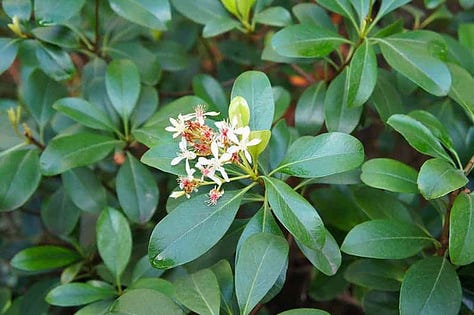
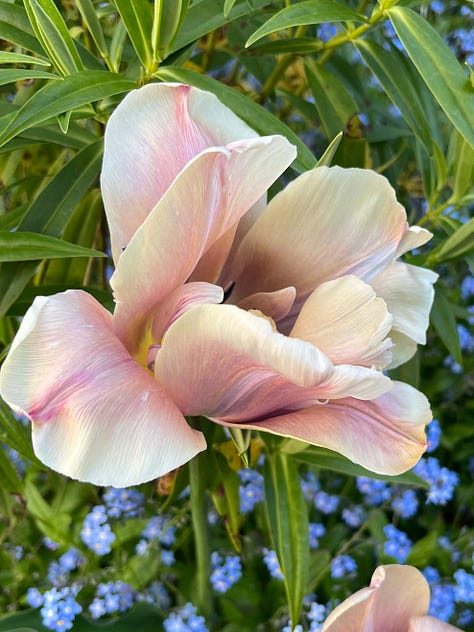

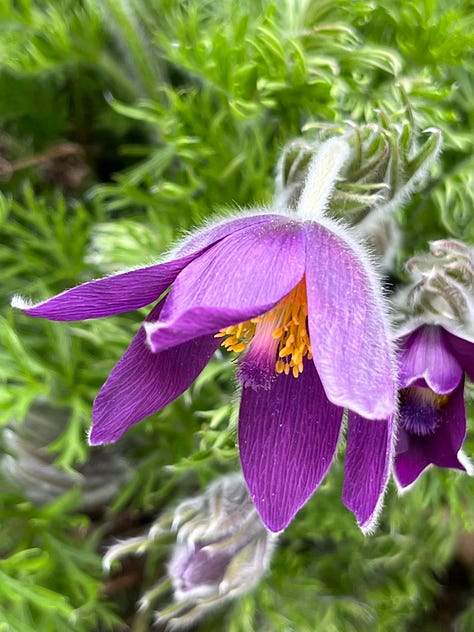
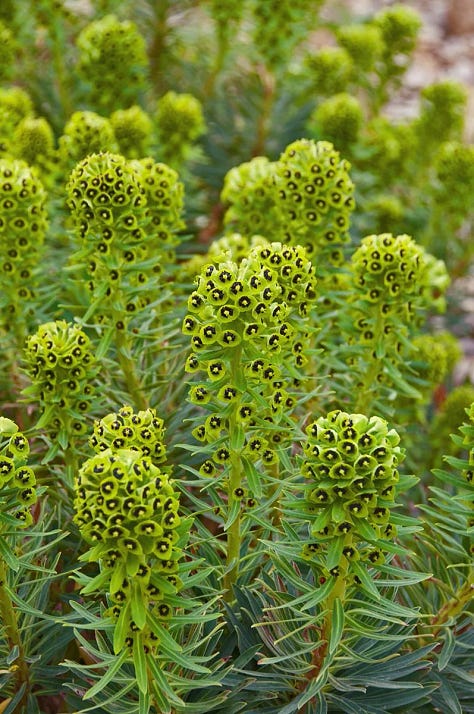
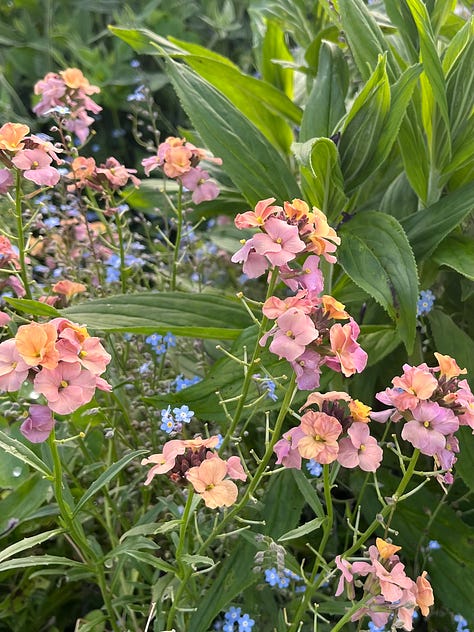
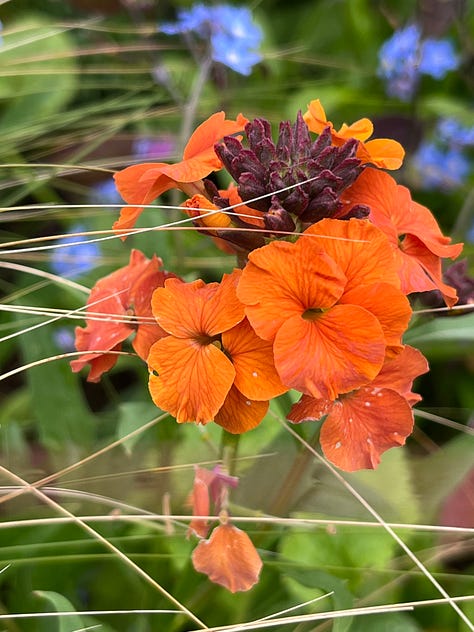
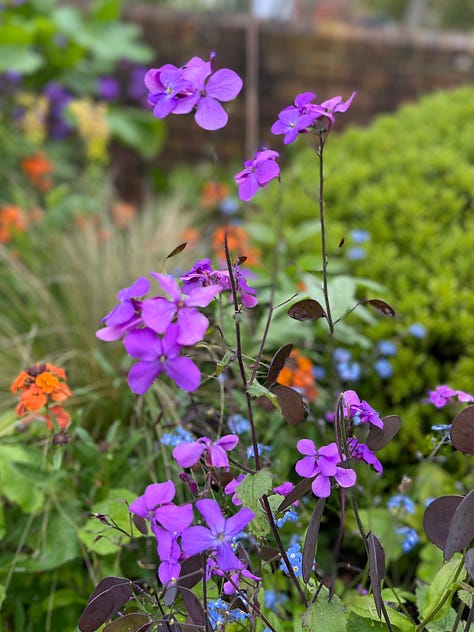
Tulipa ‘La Belle Epoque’ (top row right) has been one of my firm favourites ever since I first discovered her. Emerging demure with rosy-pink, tightly furled, cup-shaped blooms, she soon relaxes outwards to reveal the froth of petals within. As she matures, her blooms fade to the most beautiful mix of apricot and dusky pink, and she lets everything go, petals reflexing outwards in artistic disarray. You have to order this one early - it’s so popular that it always sells out by about mid-September. Order in August from Peter Nyssen.
‘Black Hero’ (top row left) is the double form of the classic dark purple ‘Queen of Night’, with sumptuous maroon-black flowers with a hint of red when the light shines through them. It’s the kind of tulip that goes with absolutely anything. Flowering slightly later than ‘La Belle Epoque’, the Hero is usually still looking quite together as La Belle starts to unravel.
Raphiolepis indica: (top row centre) Also known as the Indian hawthorn, this is the hardier cousin of R. umbellatus. It has attractive clusters of glossy, rounded leaves and if happy will flower in pink or white, followed by blue-black berries. I have a white form, and having looked online I think I prefer the white or very pale pink to deeper pink forms. ‘White Cloud’ from Bluebell Nursery looks like a good choice. It needs full sun and a well drained, reasonably fertile soil, but most importantly shelter from cold winds.
Geum ‘Totally Tangerine’: (middle row left) This is one of the most floriferous and easy geums, with pale orange flowers that go on and on all summer if you deadhead them. It grows best in full sun but will take a bit of dappled shade, and will thrive in most soils, doing best in reasonably moisture-retentive ground. Its loose stems provide diffused rather than concentrated colour, and its flowers dot in and out of other plants in the most charming way. It goes with absolutely anything, and is readily available to buy in most garden centres and nurseries.
Pulsatilla vulgaris: (middle row centre) I love the common purple form of Pasque flower as well as the white form, and have both in my front garden. Both have fabulous feathery seed heads - dusky brown for the purple variety and greeny silver for the white. I’ve also been experimenting with different pulsatillas - I added several more to the garden last year including ‘Rose Bells’, ‘Rubra’ and the almost indigo Pulsatilla turczaninowii from D’Arcy & Everest. Mine are making sizeable clumps on the edges of my brick edged borders and are even self sowing into the gravel.
Euphorbia characias ‘Black Pearl’: (middle row, right) This is a smaller version of Wulfenii, which also runs through this garden, ‘Black Pearl’ has distinctive black-eyed, lime-green flowers. The black picks up on ‘Black Hero’ and the structure of this plant remains strong all through the year. Buy it from Crocus.
Lunaria ‘Corfu Blue’: (bottom row, right) I have often waxed lyrical about this plant, as it is one of the stalwarts of my early spring garden. One plant has started to flower already but it gets going properly towards the end of March and flowers throughout April and well into May, followed by gorgeous deep purple seedpods that fade to greeny brown, then bronze, then silver, lasting all through the winter. It’s a variation of our common British honesty, but (obviously from the name) hails from Corfu. It was collected by Mary Keen and introduced by nurserywoman Derry Watkins. I originally grew it from seed and have had it in my garden ever since as it self seeds readily. You can buy seed from Special Plants. I promise you, you will never regret introducing this plant into your garden!
Erysimum ‘Apricot Twist’: I first saw this in Jasper Conran’s garden in Dorset (see above) and had to have it. It has generous clusters of flowers in a really powerful, punchy orange, but this is offset by the dusky purple buds (which are the same colour as ‘Black Hero’). It’s a perennial wallflower that flowers from late April through the summer, and sometimes even beyond. There are even a few flowers on one of my plants at the moment, in Feb. I bought my plants a couple of years ago as plugs from Parkers.
Erysimum ‘Pastel Patchwork’: Ditto above, as it was also in Jasper Conran’s garden, mixing with lavender and lupins (see below). This one really is the most perfect match for ‘La Belle Epoque’, picking up on all the same shades of apricot and dusky pink with pale yellow highlights too. It’s less readily available than ‘Apricot Twist’ but I have tracked it down at Beth Chatto’s where it is ‘to be propagated’ but you can send your email address to be notified when it’s available. Perennial wallflowers will grow in most soils and need a sunny spot.
You can read the original House & Garden article that appeared about this planting combination here.
What I’m up to in the garden this weekend
On my list of things to do is:
• finish cutting back perennials and grasses
• prune wisteria
• finish pruning roses
• plant new hellebores and snowdrops
• dig up and divide asters in back border
• move a hebe that has become too big in the front garden
• sow my first seeds - perennials and sweet peas first
• prick out and pot on a few neglected autumn-sown seedlings
So I have my work cut out, but I’m looking forward to the feeling of purpose and satisfaction that will undoubtedly be with me when I collapse on Sunday evening!
Have a lovely weekend everyone.
Clare x



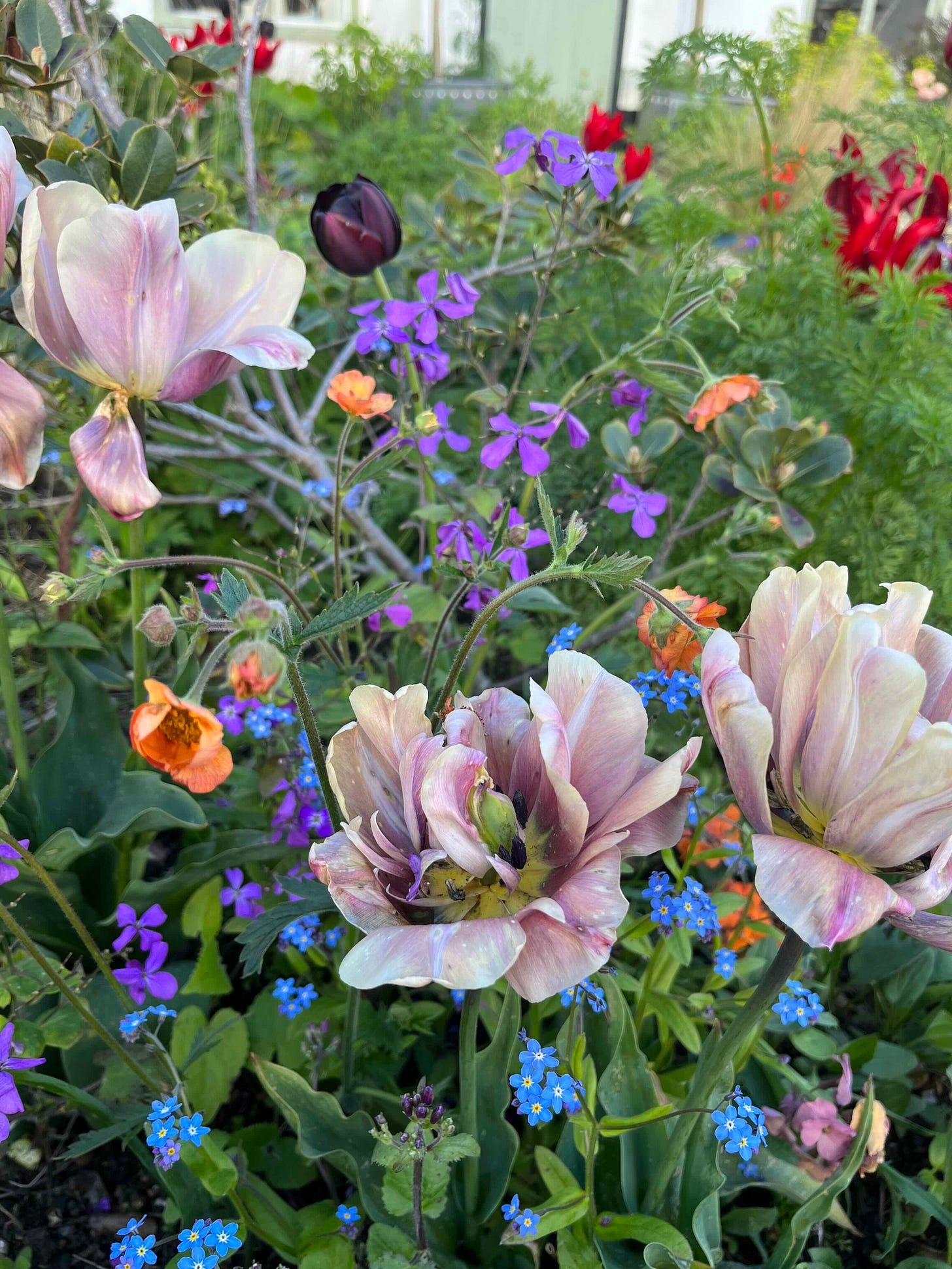

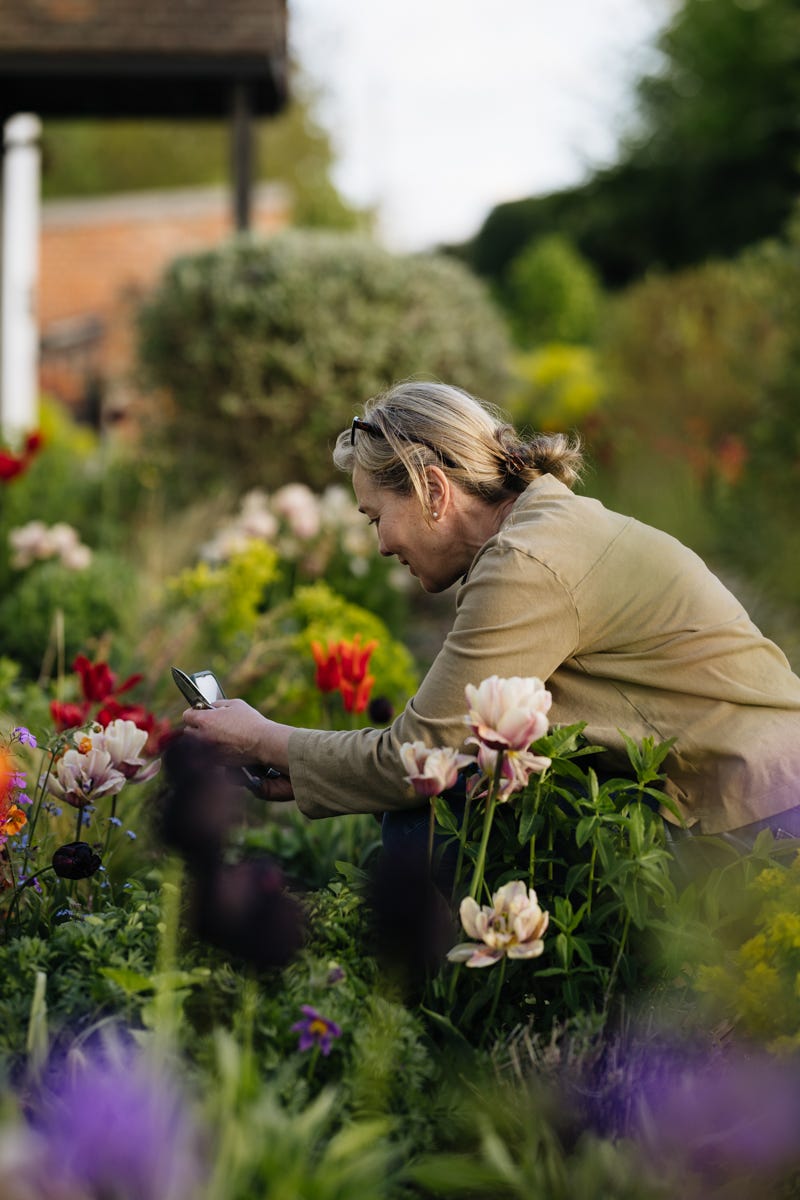
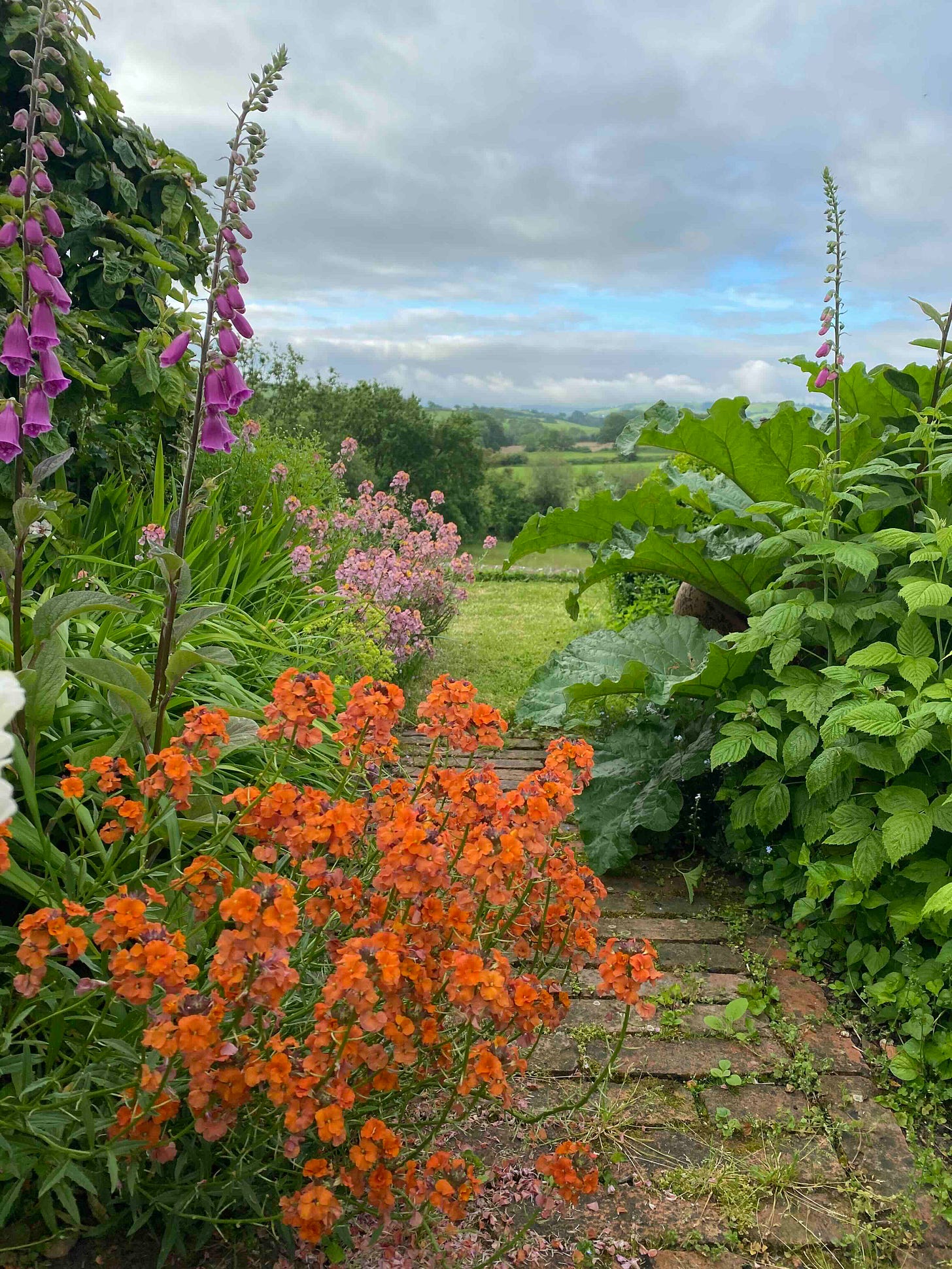
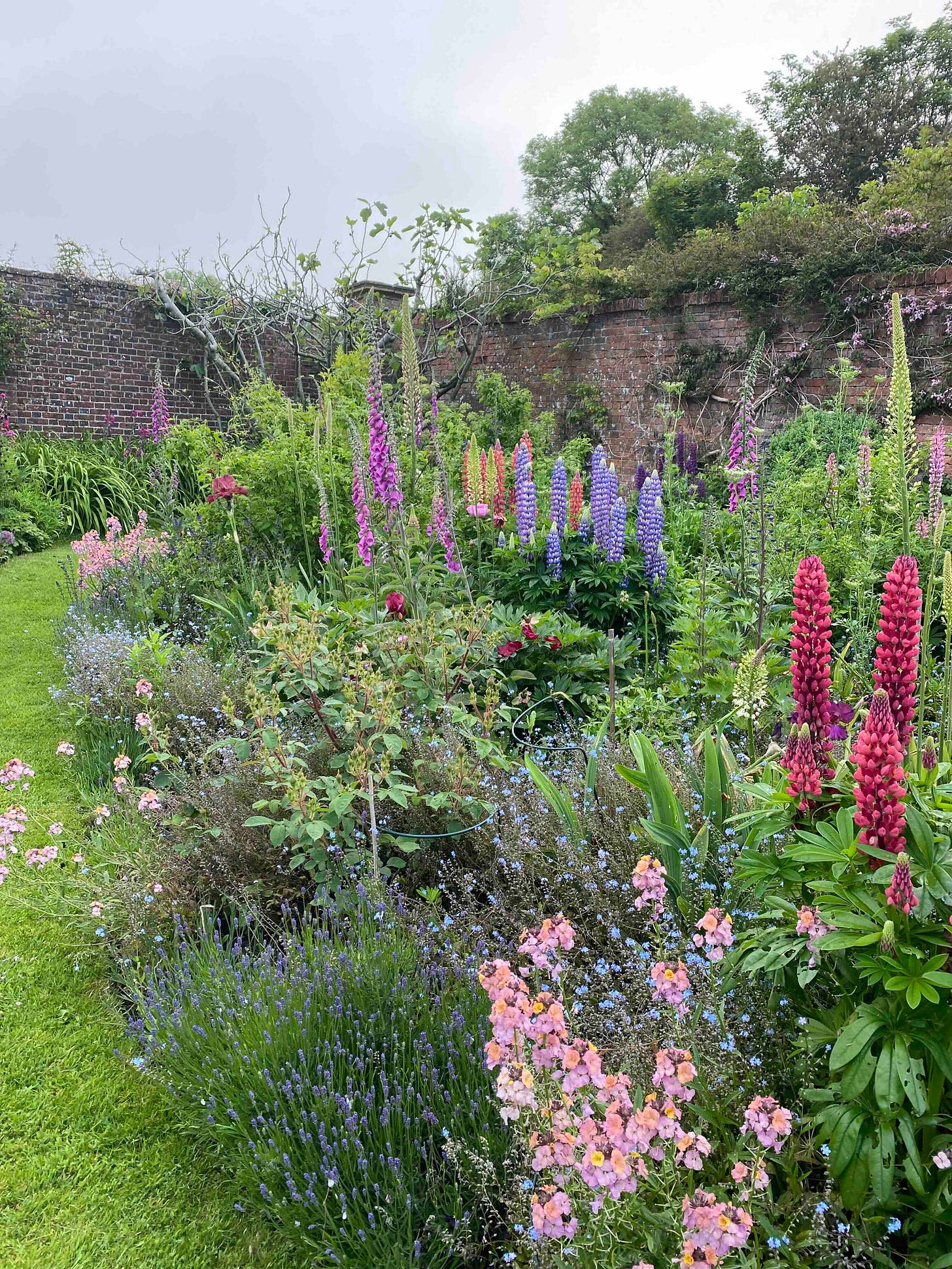

Love this Clare - thank you for another inspiring combination and i love your to-do list...mine is only to PREPARE for sowing! Roll on Sunday evening!